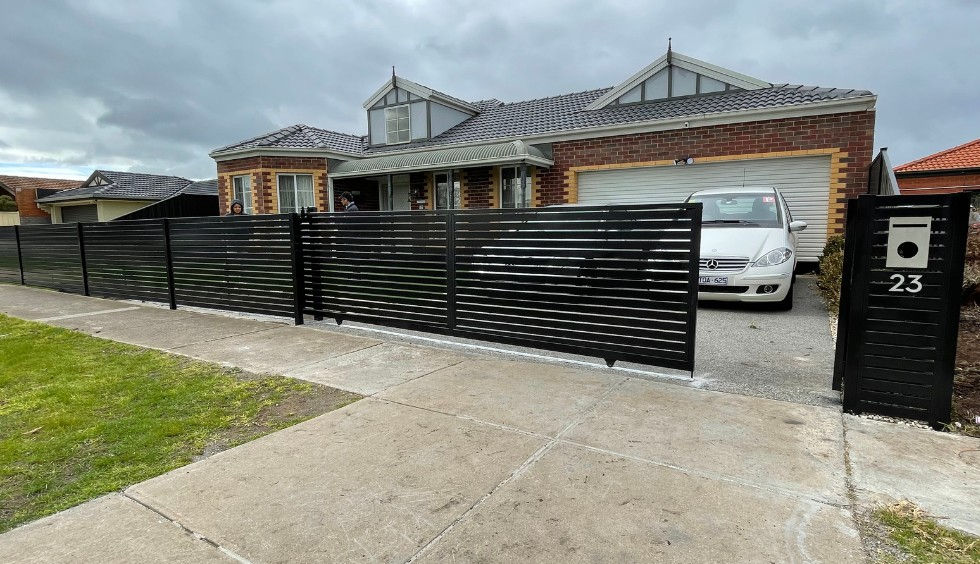Understanding The Basics Of Automatic Sliding Gates Installation Process
- louisjack110
- Aug 22
- 3 min read
Updated: Nov 4
Welcome to our comprehensive guide on automated gate installation. As the world veers more towards home automation, automated sliding gates have become a security feature in many Australian homes. Not only do these modern gates offer a contemporary aesthetic, but they also increase safety and enhance convenience.
But what are automated sliding gates, really? These are entrance devices that use electric motors and sensors to control access to your property. With automated systems, someone entering or exiting your property will not need to manually open the gate. These gates utilize various technologies including remote control, keypad access, and vehicle tag recognition.
Choosing to install an automatic sliding gate is a significant decision, one that invites several questions about design, installation, and maintenance. This article aims to answer all your burning questions about automated sliding gates. We will walk you through why you'd want one, choosing the right material, accurate measurements, understanding the gate's components, the installation process, how to maintain your gate and so much more.

Why Choose Automatic Sliding Gates?
Automatic sliding gates pack several advantages. One big selling point is convenience. Imagine coming home late at night and not needing to leave your vehicle to manually open your gate? If safety is a concern, having an automatic slide gate minimises exposure to possible external threats.
These gates also boost the curb appeal of your home. With many options available, and using highly customizable materials like steel, aluminium, and wood, you can tailor a sliding gate to match the aesthetic of your home beautifully. An automated gate can make an architectural statement, proclaiming that your home is modern, elegant, and secure.
The Foundation: Choosing The Right Gate Material For Whatever Weather
Choosing the right gate material is critical in Australia’s diverse climate. Factors such as heat, wind, rain, and salty air can impact the lifespan of your gate.
Steel is a popular choice thanks to its robust and durable nature. Galvanised steel, in particular, offers fantastic corrosion resistance making it ideal for coastal areas. Aluminium is another option. This material shares close similarities with steel, but it's lighter and more resistance to rust.
Don’t Trip: Getting The Measurements Right
Correct measurements are crucial when it comes to installing a sliding gate. A gate that's too small will leave gaps, inviting unwanted pests or intruders. On the other hand, a gate too large will pose installation challenges, and it may not operate effectively.
Begin by measuring the width of the gate opening. Ensure you measure from one end of the wall or fence to the other, at the widest point. Don't forget to include any elements that might interfere with the gate's operation.
From Paper To Reality: The Installation Process
The process of installing an automated sliding gate involves various steps. Firstly, you'll need some tools and materials. This will typically include the gate itself, gate hardware, a power drill, spirit level, concrete, wrench, and screws, amongst other things.
Installation begins with assembling the gate track on a level surface. The gate is then placed onto the track, and rollers are attached to ensure smooth operation. Next, concrete footings are poured for the gatepost, and once these are set, the gate can be hung.
Maintenance 101: Keeping Your Sliding Gate In Top Condition
A well-cared-for automated sliding gate can last you many years. Maintenance involves routine checks on the gate's component functionality and cleanliness.
Keep the gate tracks free of debris, as this can interfere with smooth gate operation. Regularly check the state of each component including the gate wheels, motor, and access controls. Chain and hinges should be lubricated occasionally to prevent wear and tear.
Making It Your Own: Customization Tips
Customizing your gate can help it stand out and add a personal touch. Depending on your choice of material, you could paint the gate in colours that complement your home, include your house number or family initials, or design the gate with creative silhouette cutouts for a unique look.
Look towards Australian homes for inspiration. In Melbourne, a home uses a steel automated sliding gate featuring a laser-cut tree design, adding an artistic and environmentally conscious statement to their property. Another home in Perth opted for a rustic wooden sliding gate contrasting beautifully with their modern whitewashed residence.
Conclusion
And there you have it, our comprehensive guide on automated sliding gates. We hope it helps and equips you with the knowledge to make informed choices regarding your home's gate installation.
If you've ever installed an automatic sliding gate yourself, please share your experience, tips, or tricks. Insights from homeowners and experts are valuable and can only add to making this guide more comprehensive. Happy gate installation!
.png)



Comments